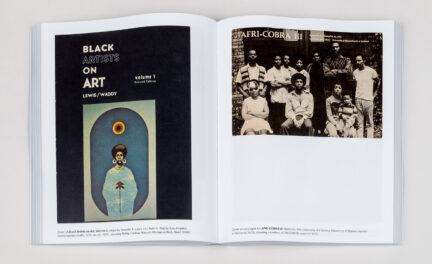The digital art history (DAH) team at the Getty Research Institute is a small circle of technologists, project managers, and scholars who create tools and projects for art historical research using digital humanities methods. We’re introducing the DAH team one by one here on the Iris with the hope of finding colleagues and students who share interests, and who are working to advance similar DAH projects and ideas.
Say hi to Nathaniel Deines, a project manager and technologist in our team. Among other work, he managed the release of Getty Scholars’ Workspace, an online environment that supports collaborative research, and is currently working on the Szeemann Digital Seminar, a collaborative of scholars and students using a variety of digital tools to research and teach about the life and work of curator Harald Szeemann. He is also working on the Ed Ruscha, Streets of Los Angeles project, which seeks to digitize and provide innovative access to thousands of images from Ruscha’s archive of photos that depict entire streets in Los Angeles.
Experiments in DH Transcription
One of Nathaniel’s R&D projects right now is the Getty’s first foray into crowdsourcing: Mutual Muses. Nathaniel is collaborating with fellow DAH team member Melissa Gill on a case study that uses the Research Institute’s digitized collection of the correspondence between English curator and art critic Lawrence Alloway and artist Sylvia Sleigh. The project is hosted on Zooniverse, a platform initially developed for citizen science initiatives but now featuring a small number of humanities projects. Participants of all ages and backgrounds are welcome to take part—both on principle and because open participation will help the project team identify what audiences scholarly crowdsourcing projects can realistically reach.

The Mutual Muses transcription project, hosted on Zooniverse, is an experiment in crowdsourcing for digital art history.
Nathaniel’s Path to DAH
Nathaniel came to the Research Institute as a graduate intern after receiving his MA from the California Institute of the Arts, where he wrote his thesis on aesthetics, technology, and the philosopher Bernard Stiegler; he’s been working on staff since 2015. He was excited to join the Getty Research Institute because it presented a unique opportunity to engage with both art and technology, and to manage projects that would require experience in both subjects. As he explains it, “It’s satisfying to work on technology projects for a cultural institution because they tend to be complex and employ new and interesting technologies. I’m really pleased to have a job that lets me keep learning new things about art history and technology.”
Focus on Transparency and Innovation
Mutual Muses reflects a lot of what Nathaniel values in a DH project: accessibility, inclusivity, transparency, collaboration, integrity, and innovation. In addition to generating high-quality data for scholars, it is hoped that the project will help to open up the research process in a way that enhances access and activates a dialog about the archive and its subjects.
Nathaniel told me he is most inspired when he witnesses people “stepping out of themselves” when they’re brave or passionate about their work, and when he sees experts act as learners, experimenting at a high level. Mutual Muses provides an opportunity to engage non-specialists (in addition to art historians), and he hopes the project will present contributors with a unique and enriching experience, and an opportunity for them to build a community around their shared knowledge and discoveries.
Nathaniel is eager to hear from fellow DH and DAH practitioners and project managers with similar interests. Find him on Twitter @NathanielDeines or get in touch with him via the DAH team at gridah@getty.edu.





Comments on this post are now closed.